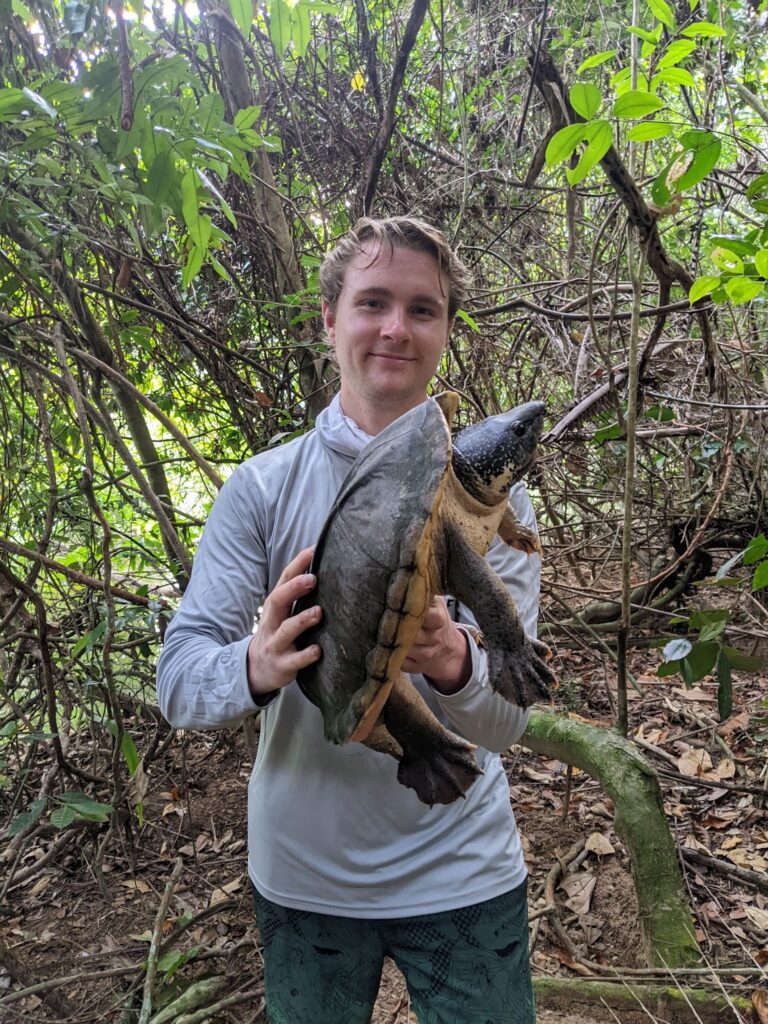
This past month our senior field conservationist Jimmy Welch had the opportunity to travel to Belize to assist with the field conservation research of the Hicatee Turtle with our Zoo New England partner BFREE.
Hicatee or Central American River Turtle (Dermatemys mawii) is a critically endangered species found in Belize and several surrounding countries. However, the species stronghold resides in Belize. Zoo New England has been in partnership with The Belize Foundation for Research and Environmental Education (BFREE) since 2019. In a recent blog post Barney Hall the Wildlife Fellow for BFREE described the fantastic success at the BFREE Field Station, that 29 clutches of eggs were laid in-situ around their on-site ponds. They have had a very successful breeding program for years but thanks to the team’s ingenuity trying several substrates this was the first time breeding females have deposited nests naturally around their ponds!

Another crucial aspect to the conservation of Hicatee’s will be to assess their wild populations at existing sites and explore new potential sites where Hicatee’s may be present. That is the exact task I (Jimmy Welch of the Field Conservation Department) traveled to BFREE to assist with. We departed the BFREE field station and traveled a short distance to the Southeast to the Golden Stream Preserve with the team to survey for Hicatee’s. This preserve stretches along a corridor of the Golden Stream that is protected from any fishing, hunting, trapping or other human use and has incredibly diverse habitat from broadleaf forest, broken ridge to mangroves as you transition to the estuarine confluence with the ocean.

Unfortunately during our 4 night, 5 day survey we did not observe any Hicatee’s. We did collect two fecal samples that could have been Hicatee but will need to be tested in a lab to identify the species. This is still excellent data to collect and will be important in understanding the overall distribution across Belize and what habitat conditions Hopefully in subsequent field surveys in surrounding rivers the team will find Hicatee’s and gain a better understanding of the distribution in areas of Southern Belize where little is known about the species population. This work could also be crucial in finding new sites to release captive raised Hicatee’s back into the wild to help re-establish or boost existing populations. The team has done releases already of their headstarted turtles to wild sites, but as their success grows in nesting and captive raising juvenile turtles it would be great to have new release sites.

We were able to catch other species during our survey including two giant musk turtles (Staurotypus salvinii), a species listed as near-threatened by the IUCN and a white-lipped mud turtle (Kinosternon leucostomum). We were able to collect morphometric data on these turtles and the BFREE team will assess other turtle populations through their fieldwork which is important data as many of the field sites have never been surveyed for turtles. Overall it was an excellent experience getting to camp in the jungle of Belize alongside Golden stream and getting to survey for such an incredible species.
